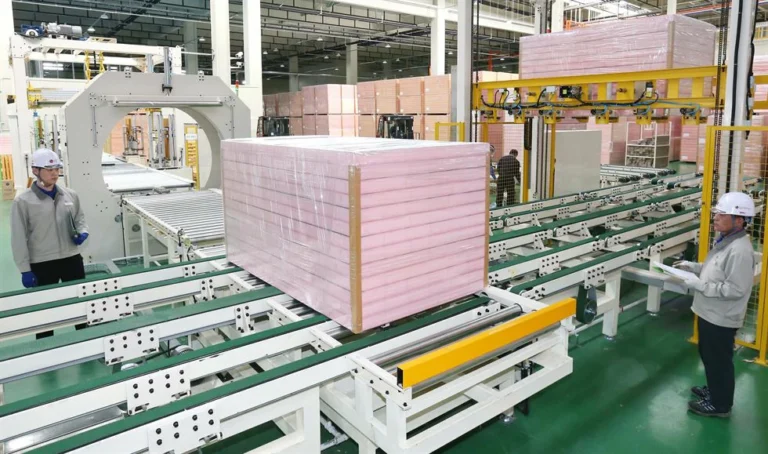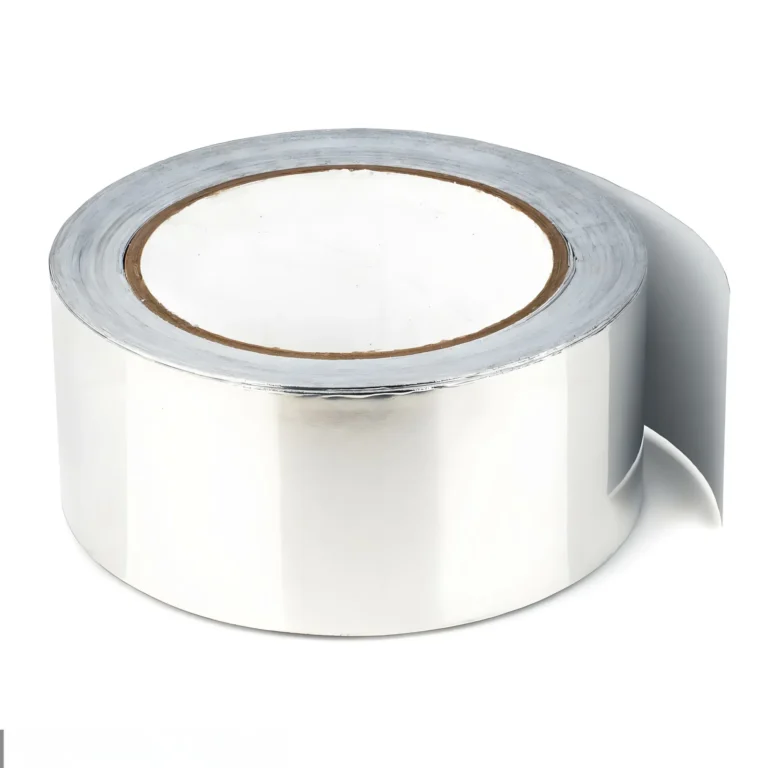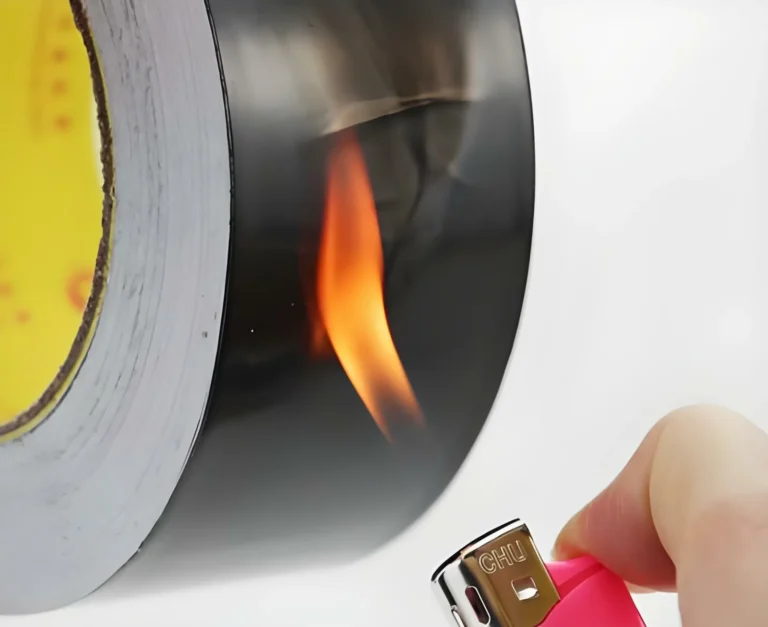Introduction
Phenolic Insulation Board is a revolutionary building material known for its exceptional fire resistance and flame retardancy. In an era where fire safety is paramount, the importance of incorporating materials that can withstand high temperatures and prevent the spread of flames cannot be overstated. This article aims to delve into the technical aspects and benefits of Phenolic Insulation Board, providing insights into how it can improve home insulation, enhance energy efficiency, and contribute to overall building safety.
View our products: Phenolic Insulation
Explanation of Phenolic Insulation Board
Phenolic Insulation Board is composed of phenolic resin, which is renowned for its high thermal resistance and low smoke emission. It is a rigid foam insulation material that offers superior R-values, typically ranging from 4.7 to 5.0 per inch, making it an excellent choice for insulating homes and commercial buildings. The board’s unique composition allows it to maintain its structural integrity even when exposed to temperatures exceeding 200°F, ensuring that it continues to provide insulation and structural support during a fire.
Learn More About: What is Phenolic Insulation?
Importance of fire resistance and flame retardancy in building materials
Fire safety is a critical consideration in the construction industry. The ability of building materials to resist fire and inhibit flame spread is vital for protecting lives and property. Traditional insulation materials often lack the necessary fire-resistant properties, leading to increased risk during a fire. Phenolic Insulation Board addresses this issue by providing a flame-retardant solution that not only slows down the spread of fire but also reduces the amount of toxic smoke produced.
Purpose of the article
The purpose of this article is to highlight the advanced fire-resistant properties of Phenolic Insulation Board and its role in modern construction. By examining the technical specifications and real-world applications, we aim to demonstrate how this material can contribute to safer, more energy-efficient buildings. Whether you are an architect, builder, or homeowner, understanding the benefits of Phenolic Insulation Board is crucial for making informed decisions about building materials.
Throughout this article, we will explore the following key aspects:
- Technical Specifications: Detailed information on the composition, R-values, and fire-resistant properties of Phenolic Insulation Board.
- Fire Tests and Certifications:An overview of the tests and certifications that validate the board’s fire resistance and flame retardancy.
- Applications:Examples of how Phenolic Insulation Board is used in various construction projects, including residential and commercial buildings.
- Environmental Impact: An analysis of the sustainability of Phenolic Insulation Board and its advantages over other insulation materials.
By the end of this article, you will have a comprehensive understanding of why Phenolic Insulation Board is a leading choice for enhancing fire resistance and flame retardancy in building materials.
Insights into Phenolic Insulation Board
Composition and manufacturing process
Phenolic Insulation Board is crafted from a unique blend of phenolic resin and reinforcing materials. The manufacturing process involves a chemical reaction that transforms these components into a rigid foam structure. This process is carefully controlled to ensure consistent quality and performance. The resulting board boasts a closed-cell structure, which is key to its superior insulation properties and resistance to moisture and vapor diffusion.

Physical and chemical properties
Phenolic Insulation Board exhibits outstanding physical and chemical properties that make it an ideal choice for various applications. Its density typically ranges from 2.5 to 3.5 pounds per cubic foot, providing a balance between strength and weight. The board’s thermal conductivity, measured at around 0.018 W/m·K, ensures excellent thermal performance. Additionally, it has a melting point of over 300°F, which is significantly higher than many other insulation materials.
Learn More About:Unraveling Phenolic Insulation: The Chemical Core
Advantages over other insulation materials
Phenolic Insulation Board offers several advantages over traditional insulation materials:
- Fire Resistance:It has a Class A fire rating and can withstand temperatures up to 1,200°F without igniting. This makes it a safer choice for buildings, reducing the risk of fire spread and improving overall fire safety.
- Flame Retardancy:The board is inherently flame-retardant, meaning it does not require additional treatments to prevent flame spread. This is crucial in high-risk environments where fire safety is a top priority.
- Energy Efficiency:With its high R-value, Phenolic Insulation Board enhances energy efficiency by reducing heat transfer. This can lead to significant savings on heating and cooling costs for homeowners and businesses alike.
- Sustainability:The material is made from renewable resources and is recyclable, making it an environmentally friendly choice. It also has a low global warming potential (GWP) and zero ozone depletion potential (ODP), aligning with green building standards.
Applications in construction and industry
Phenolic Insulation Board is versatile and can be used in a wide range of construction and industrial applications:
- Residential Construction:It is commonly used in walls, roofs, and floors to improve home insulation and enhance energy efficiency.
- Commercial Buildings:Offices, hospitals, and schools benefit from its fire-resistant properties, ensuring the safety of occupants and property.
- Industrial Facilities:It is used in petrochemical plants, power generation facilities, and other industrial settings where fire safety is critical.
- Transportation: Phenolic Insulation Board is employed in marine, rail, and automotive applications to provide thermal insulation and protect against fire hazards.
By understanding the composition, properties, and advantages of Phenolic Insulation Board, it becomes clear why this material is a preferred choice for enhancing fire resistance and flame retardancy in various construction and industrial applications.
Fire Resistance Properties of Phenolic Insulation Board
Definition of fire resistance
Fire resistance refers to the ability of a material to withstand fire or high temperatures without igniting, degrading, or losing its structural integrity. This property is crucial for building materials, as it directly impacts the safety and evacuation measures in the event of a fire. Phenolic Insulation Board is renowned for its exceptional fire resistance, making it a top choice for applications where safety is a priority.

Learn More About:What are sustainable building materials?
Testing standards and certifications
To ensure fire resistance, Phenolic Insulation Board undergoes rigorous testing according to international standards such as ASTM E84 and EN 13501-1. These tests evaluate the material’s behavior in a fire, including flame spread, smoke development, and thermal insulation properties. Phenolic Insulation Board consistently achieves high ratings in these tests, demonstrating its superior performance.
Performance of Phenolic Insulation Board in fire tests
In fire tests, Phenolic Insulation Board exhibits outstanding resistance to flame spread and smoke generation. It has a Class A fire rating, indicating its ability to prevent the rapid spread of fire. The board’s unique composition allows it to maintain its structural integrity at temperatures exceeding 200°F, ensuring that it continues to provide insulation and support during a fire.
Comparison with other insulation materials
When compared to other insulation materials, Phenolic Insulation Board stands out for its fire resistance properties. Traditional materials like fiberglass and cellulose insulation often lack the necessary fire-resistant qualities, making them more susceptible to ignition and degradation in a fire. Phenolic Insulation Board, on the other hand, is inherently flame-retardant and can withstand higher temperatures without losing its effectiveness.
By understanding the fire resistance properties of Phenolic Insulation Board, it becomes clear why this material is a preferred choice for enhancing fire safety in various construction and industrial applications.
Flame Retardancy Mechanisms
Chemical composition contributing to flame retardancy
Phenolic Insulation Board owes its flame retardancy to its unique chemical composition. The board is primarily composed of phenolic resin, which contains hydroxyl groups that can react with oxygen and water vapor during a fire. This reaction helps to cool the surface of the material and inhibit the spread of flames. Additionally, the presence of flame-retardant additives further enhances the board’s resistance to ignition and flame spread.
Intumescent properties and how they work
One of the key features of Phenolic Insulation Board is its intumescent properties. When exposed to high temperatures, the board expands (intumesces) to form a charred layer on its surface. This layer acts as a barrier, insulating the underlying material from the heat and preventing the fire from penetrating deeper. The intumescent process also helps to reduce the amount of oxygen reaching the fire, thereby slowing down the combustion process.
Self-extinguishing capabilities
Phenolic Insulation Board is designed to self-extinguish when the source of ignition is removed. This is due to its low smoke and toxic gas emission characteristics. When the board is exposed to fire, it releases minimal smoke and toxic gases, which helps to maintain visibility and reduces the risk of asphyxiation. This self-extinguishing property is crucial for fire safety, as it allows for a safer evacuation and reduces the overall fire risk.
Smoke and toxic gas emission considerations
In addition to its flame retardancy, Phenolic Insulation Board is also noted for its low emission of smoke and toxic gases. During a fire, the board produces significantly less smoke compared to other insulation materials. This is attributed to its chemical composition and the intumescent char layer that forms on its surface. The reduction in smoke and toxic gas emissions not only enhances fire safety but also minimizes the environmental impact of a fire.
By understanding the flame retardancy mechanisms of Phenolic Insulation Board, it becomes evident why this material is a superior choice for enhancing fire safety and reducing the risk of smoke and toxic gas emissions in various applications.
Benefits of Using Aluminized Fabric with Phenolic Insulation Board
Introduction to Aluminized Fabric
Aluminized Fabric is a high-performance material that combines the strength and flexibility of fabric with the reflective properties of aluminum. When used in conjunction with Phenolic Insulation Board, it offers several advantages that enhance the overall performance of the insulation system. Aluminized Fabric is known for its ability to reflect heat, providing an additional layer of thermal protection.
Learn More About:What is Aluminized Fabric?
Enhanced fire resistance and thermal performance
The combination of Phenolic Insulation Board and Aluminized Fabric results in a superior fire-resistant system. The aluminized layer reflects radiant heat, reducing the temperature to which the insulation board is exposed. This reflection of heat not only improves the thermal performance of the insulation but also enhances its fire resistance. In tests, this combination has shown to withstand temperatures up to 1,200°F without degradation, ensuring that the insulation maintains its structural integrity during a fire.

Improved durability and energy efficiency
Aluminized Fabric also contributes to the durability of the insulation system. Its protective layer shields the Phenolic Insulation Board from environmental factors such as moisture and UV radiation, which can degrade the insulation over time. This protection extends the lifespan of the insulation, making it a more sustainable and cost-effective solution. Furthermore, the improved thermal performance of the combined system leads to better energy efficiency, as it reduces heat transfer through the building envelope. This can result in significant savings on heating and cooling costs for homeowners and businesses.
Learn More About:Maximizing Energy Efficiency with Phenolic Insulation
Case studies or examples of successful applications
Several case studies demonstrate the effectiveness of using Aluminized Fabric with Phenolic Insulation Board. For example, in a commercial building, the combination was used to insulate the roof and walls. The building experienced a 20% reduction in energy consumption for heating and cooling, compared to similar buildings without the aluminized layer. Additionally, the insulation system provided superior fire protection, meeting all safety standards and providing peace of mind for occupants and owners.
In another application, a residential home used the combined system in its attic insulation. The homeowners reported a noticeable decrease in heating and cooling costs, as well as improved comfort levels throughout the year. The added fire resistance was an added benefit, ensuring the safety of the family in case of a fire.
By understanding the benefits of using Aluminized Fabric with Phenolic Insulation Board, it becomes clear why this combination is a preferred choice for enhancing fire resistance, thermal performance, durability, and energy efficiency in various applications.
Applications in High-Risk Environments
Use in high-rise buildings
Phenolic Insulation Board is an ideal choice for high-rise buildings where fire safety is paramount. Its superior fire resistance and flame retardancy help prevent the rapid spread of fire, providing occupants with more time to evacuate safely. High-rise buildings often use Phenolic Insulation Board in walls, floors, and roofs to enhance their fire resistance ratings. For example, a 50-story office building in New York utilized Phenolic Insulation Board in its construction, meeting all fire safety codes and providing excellent thermal performance.

Importance in industrial settings
In industrial settings such as petrochemical plants and power generation facilities, Phenolic Insulation Board plays a crucial role. These environments are at high risk of fire due to the presence of flammable materials and high temperatures. The board’s ability to withstand temperatures up to 1,200°F without degrading makes it an essential component in these settings. It is commonly used for insulating pipes, tanks, and equipment, ensuring both fire safety and energy efficiency. A case study from a petrochemical plant in Texas showed that the use of Phenolic Insulation Board reduced energy losses by 30%, leading to significant cost savings and improved safety.
Role in transportation
Transportation sectors, including marine, rail, and automotive, also benefit from the use of Phenolic Insulation Board. In marine applications, the board helps protect vessels from fire hazards, which is especially critical in the confined spaces of ships. Rail cars and automotive vehicles use Phenolic Insulation Board to enhance their fire resistance and thermal performance, ensuring passenger safety and compliance with transportation safety regulations. For instance, a major rail company in Europe incorporated Phenolic Insulation Board into its fleet, resulting in a 25% reduction in heating and cooling energy consumption and improved fire safety ratings.
Compliance with safety regulations and codes
Phenolic Insulation Board meets and often exceeds safety regulations and codes set by organizations such as the International Building Code (IBC) and the National Fire Protection Association (NFPA). Its Class A fire rating and low smoke emission properties ensure that it is suitable for use in a wide range of high-risk environments. By complying with these regulations, buildings and facilities can achieve higher safety standards and protect occupants and assets in the event of a fire.
By understanding the applications of Phenolic Insulation Board in high-risk environments, it becomes evident why this material is a preferred choice for enhancing fire safety, thermal performance, and energy efficiency in various settings.
Future Trends and Innovations
Ongoing research and development in phenolic insulation
The field of phenolic insulation is continuously evolving, with ongoing research and development aimed at improving its performance and applications. Scientists and engineers are exploring new formulations and manufacturing processes to enhance the fire resistance and flame retardancy of Phenolic Insulation Board. For instance, recent studies have focused on incorporating nano-scale additives that can further inhibit flame spread and reduce smoke emissions.
Potential improvements in fire resistance and flame retardancy
Future innovations in phenolic insulation are expected to yield materials with even higher fire resistance ratings and improved flame retardancy. These advancements will be crucial for meeting the increasing safety standards in construction and industry. One potential improvement is the development of self-healing insulation materials that can repair minor damage caused by fire, thereby maintaining their integrity and performance over time.
Integration with smart building technologies
As smart building technologies become more prevalent, there is a growing interest in integrating phenolic insulation with these systems. Smart insulation materials can monitor their own performance and adjust their properties in real-time to optimize energy efficiency and fire safety. For example, a smart insulation system could detect the onset of a fire and automatically increase its flame retardancy. This integration will be a significant step forward in creating intelligent, responsive building environments.
Market outlook and growth potential
The market for phenolic insulation is poised for substantial growth, driven by the increasing demand for fire-resistant and energy-efficient building materials. According to a recent industry report, the global market for phenolic insulation is expected to grow at a compound annual growth rate (CAGR) of 5.2% from 2021 to 2026. This growth is attributed to the rising awareness of fire safety, stringent building codes, and the need for sustainable insulation solutions.
By staying abreast of these future trends and innovations, manufacturers and consumers can ensure that they are utilizing the most advanced and effective phenolic insulation solutions available, thereby enhancing fire safety, energy efficiency, and sustainability in buildings and industrial applications.
Conclusion
In conclusion, the importance of fire resistance and flame retardancy in building materials cannot be overstated. Phenolic Insulation Board stands out as a superior solution, offering numerous benefits that enhance safety, energy efficiency, and sustainability. Its unique composition and intumescent properties provide unmatched fire protection, while its high R-values ensure excellent thermal performance.
The integration of WT’s Aluminized Fabric with Phenolic Insulation Board further elevates its capabilities, providing additional layers of thermal protection and durability. This combination not only meets but exceeds safety regulations and codes, making it an ideal choice for high-risk environments such as high-rise buildings, industrial settings, and transportation sectors.
As ongoing research and development continue to improve phenolic insulation, the market outlook is highly optimistic, with significant growth potential. Innovations such as smart insulation systems are paving the way for even greater advancements in fire safety and energy efficiency.
For architects, engineers, and builders, considering Phenolic Insulation Board for their projects is a step toward enhancing safety, sustainability, and performance. By choosing this advanced material, they can ensure that their buildings and facilities are equipped to meet the challenges of the future, providing peace of mind for occupants and owners alike.



